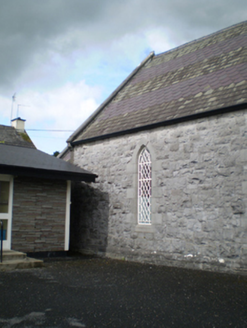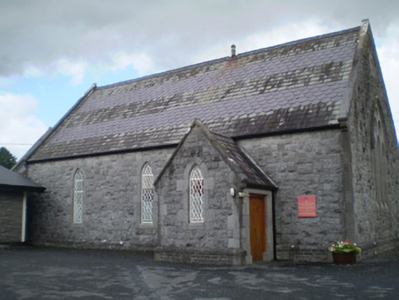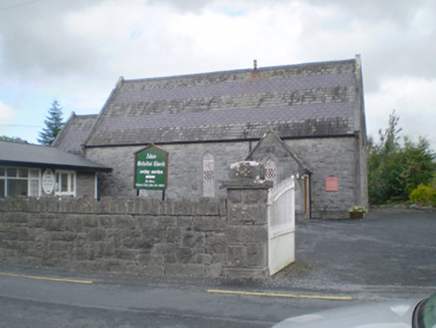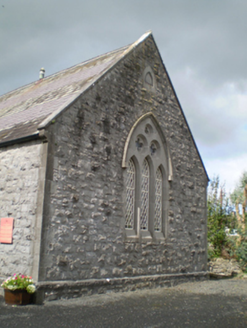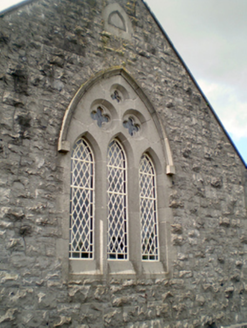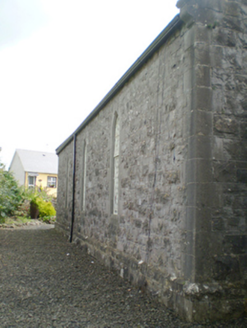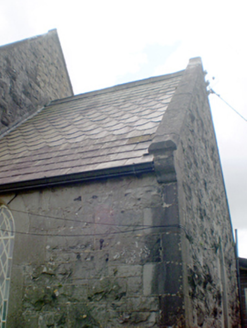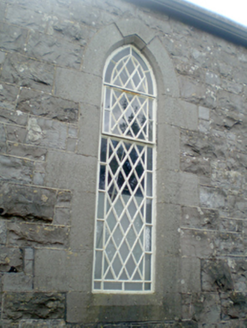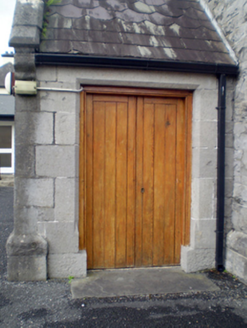Survey Data
Reg No
21824005
Rating
Regional
Categories of Special Interest
Architectural, Artistic, Social
Previous Name
Adare Methodist Chapel
Original Use
Church/chapel
In Use As
Church/chapel
Date
1870 - 1875
Coordinates
146206, 146099
Date Recorded
31/08/2008
Date Updated
--/--/--
Description
Freestanding gable-fronted Methodist church, built in 1873, with three-bay nave, lower gabled chancel to west elevation and gable-fronted single-bay single-storey porch to south elevation. Pitched slate roof with cut limestone copings and carved limestone brackets to gables. Snecked limestone walls with cut limestone plinth course and dressed limestone quoins. Dressed limestone pointed arch plaque to east gable. Pointed arch openings with dressed limestone chamfered block-and-start surrounds and quarry glazed windows. Triple lancet openings to east gable with shared dressed limestone chamfered block-and-start surround having three quatrefoil openings above within circular chamfered surrounds, the whole having carved limestone hoodmoulding over. Square-headed opening to porch with dressed limestone chamfered surround, plinth blocks and timber battened double-leaf doors. Cut limestone boundary wall with cut limestone copings, cut limestone square-profile piers with caps and cast-iron gate to south.
Appraisal
Adare has a long tradition of Methodist worship. John Wesley, founder of the Methodist Church, visited the town on a number of occasions. The present church, which was designed by the architect William Fogerty, replaced and earlier structure, built a little outside the town. In 1873 the Countess of Dunraven laid the foundation stone of the present Methodist Church, which is similar to many Methodist churches built at this time and in this area. The restraint in ornamentation and the church's modest gabled form are features characteristic of Methodist churches. The fine stonework adds artistic interest, along with the east window and its surround. The structure makes a fine addition to the Adare streetscape and to the variety of ecclesiastical buildings within the town.
